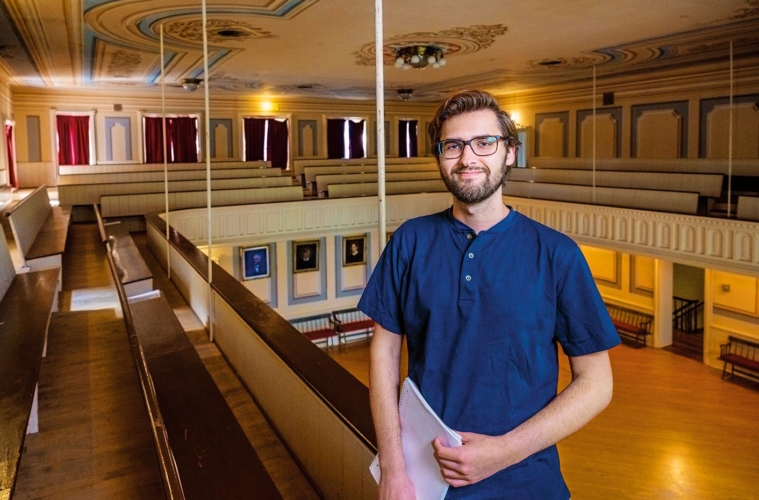At its height in the mid-19th century, the Oneida Community Mansion House (OCMH) was home to nearly 300 settlers who reimagined life in the industrial era. Today, it stands as a museum and a site of study for 16 students in professors Monica Mercado and Elizabeth Marlowe’s MUSE 310A: Utopia, Sex and Silver at the Community Mansion House.
This fall museum curatorial seminar bridges Mercado’s history expertise with Marlowe’s museum studies background. Their students learn about the specific history of the OCMH to deepen their connection to the upstate New York region and develop skills for sharing historical information with the public.
“The sense of place that you’ve moved to is sometimes easy for a college student to overlook,” says Marlowe. “This seminar is meant to lead to some real introspection about what it means to live in a community.”
To lead course discussions, students consider themes such as the Mansion House community’s utopian nature. It was from 1840–70 when this ideal reached its peak, in a time Mercado describes as “rapidly industrial” and “increasingly capitalistic” in the greater context of American history. Historians of 19th- century America also call this region of New York State “the burned-over district,” Mercado shares, and the community’s experimental values reflected the religious radicalism of its founder, the Yale Divinity School–educated John Humphrey Noyes.
“[Members of the Mansion House community] decided they would live together, work together, hold their wealth together, and support each other, but also, reimagine how people live,” says Mercado. “After the community broke up, they went on to form Oneida Limited, a silverware company that was one of the most successful American-made businesses of the 20th century.”
Eli Watson ’24 researched the community’s history prior to his enrollment in the course as a summer fellow of the Mansion House museum in collaboration with the Upstate Institute. He created panel exhibits about community members of note, such as Leonard Dunn, with special attention to their identities.
“Dunn was critical to much of the community’s industrial success,” says Watson. “He created countless machines, including washing machines and printing presses, for the community.”
One of Watson’s other panels uncovered the story of a mother named Harriet Worden. “If a mother and child were too strongly attached to one another, or the community perceived this,” Watson explains, “they’d be separated as a form of punishment.”
This system, among other family dynamics in the Mansion House community, have sparked controversy among historians.
“One of the community’s most tricky ideals was complex marriage — this idea that everyone was living in community, and also, in the eyes of God, married to each other,” explains Mercado. “So there were all these kinds of experiments in how a community should be sexually organized, which goes against 19th-century, middle-class propriety of who lives in a house and who’s married to whom.”
Considering the Mansion House community’s history as a whole, each student in the curatorial course has chosen an area of interest — such as art, gender, or commerce — to create a public-facing project for the museum. Director of Museum Affairs Tom Guiler, whom Mercado and Marlowe refer to as an “honorary third professor,” opened the site’s archives for student research.
“I feel like I could continue digging into this place for so long and learn so much,” says Watson.
This class is funded by the Colgate Upstate Institute’s Community Course Development Grant.

